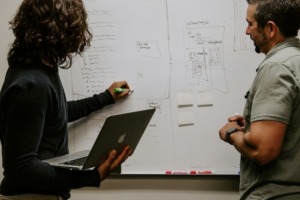The world of technology runs on intricate layers, and at the very base lies the operating system (OS) tech stack. It’s the foundation upon which software development lifecycles (SDLC) are built. A well-chosen OS tech stack forms the bedrock of your software, impacting everything from development efficiency to the end product’s performance and security.
This blog post dives deep into the world of OS tech stacks, exploring their components, applications, and their impact on your software development strategies and business decisions.
Applications and Significance of Operating Systems Tech Stacks
The choice of operating system tech stack significantly impacts various aspects of software development and deployment. Here’s why understanding OS tech stacks is critical for C-level executives in software companies:
- Performance and Scalability: Different OS tech stacks cater to varying performance needs. For instance, real-time operating systems (RTOS) prioritize responsiveness in applications like industrial control systems, while cloud-based stacks leverage distributed computing for high scalability in web applications.
- Security: A well-configured OS tech stack incorporates security measures to protect systems from vulnerabilities. This translates to lower risks of data breaches and system outages, safeguarding your company’s reputation and bottom line.
- Development Efficiency: Certain tech stacks offer pre-built frameworks and tools, streamlining the development process. This can lead to faster development cycles, reduced costs, and quicker time-to-market for your software products.
- Cost-Effectiveness: Open-source alternatives like the LAMP stack (Linux, Apache, MySQL, PHP) offer cost-efficient solutions for web development, allowing you to optimize your software development budget.

From internal challenges in setting up a successful venture to external factors affecting the people, processes, and technology triad, these issues can significantly impact your margins. Photo by Peter Gombos
Understanding Operating Systems Tech Stacks and Their Components
An operating system tech stack refers to the collection of software technologies that work together with a specific operating system. Think of it as a layered cake, with the core operating system (e.g., Windows, Linux, macOS) providing the foundation. Building upon this base layer are additional software components like:
- Kernel: The heart of the OS, managing hardware resources and communication between applications.
- Device Drivers: Act as interpreters, allowing the OS to communicate with specific hardware components like printers or keyboards.
- System Utilities: Essential tools for managing files, users, and system performance.
- Runtime Environments: Platforms like .NET or Java that enable applications to run smoothly.
- Virtualization Platforms: Technologies like Docker or Kubernetes that allow running multiple operating systems on a single machine.
Moving beyond the core operating system itself, the tech stack incorporates additional software components. However, the choice of operating system significantly influences the broader technology landscape. Operating systems can be broadly categorized, whereas each category caters to specific needs and prioritizes different functionalities:
The choice of operating system tech stack significantly impacts various stages of the SDLC. For instance, the selection of a real-time operating system (RTOS) during the planning phase would influence coding practices and testing procedures for an industrial control system application.

At the end of the day, optimizing software development processes requires a strategic approach, encompassing efficient project management, automation, and continuous workflow improvement… all of which are done by people in your organization.
Photo by Kaleidico
Comparative Study of Popular Desktop and Mobile OS: Strengths and Weaknesses
What OS tech stack is best suited for what? The first step is looking at them more in-depth.
- Linux Operating Systems, including Unix-like Operating Systems, are known for their stability, open-source nature, and high degree of customization. This makes them a popular choice for web servers, cloud deployments, and high-performance computing environments where security and control are paramount.
- Windows Operating Systems hold a dominant position in the desktop PC market, offering a user-friendly interface and extensive hardware compatibility. This makes them a go-to choice for businesses and individual users who prioritize ease of use and a vast software ecosystem.
- macOS Operating Systems are renowned for their intuitive design, focus on user privacy, and tight integration with Apple’s hardware ecosystem. This makes them a favorite among creative professionals and developers who value a seamless workflow and a polished user experience.
- Mobile Operating Systems, like Android and iOS, power the vast majority of smartphones and tablets. They prioritize touch-based interfaces, optimized battery usage, and a rich app ecosystem, catering to the needs of mobile users and developers of on-the-go applications.
In other words, the landscape of operating systems is vast, each with its strengths and weaknesses. Here’s a glimpse into some popular choices, presented in a table for a more concise comparison:
Feature |
Windows |
Linux |
macOS |
Android |
iOS |
Cost |
Licensing costs | Open-source (mostly) | Open-source (mostly) | Open-source (mostly) | Proprietary |
Security |
Good, with ongoing updates | Highly customizable security | Good, with focus on user privacy | Moderate | Excellent |
Scalability |
Limited for horizontal scaling | Excellent for horizontal scaling | Moderate | Excellent for mobile applications | Limited for horizontal scaling |
Development Environment |
Visual Studio (proprietary) | Wide variety of open-source options | Xcode (proprietary) | Android Studio (open-source) | Xcode (proprietary) |
Hardware Compatibility |
Extensive | Wide range, but may require driver setup | Limited | Wide range of mobile devices | Limited to Apple devices |
Deep Dive: Specialized Operating System Tech Stacks
Beyond the common desktop and mobile operating systems, there’s a world of specialized OS tech stacks designed for specific purposes. Let’s delve into the technical pros and cons of some of these niche players:
Career Pathways in Operating Systems Tech Stacks for IT Professionals
Understanding OS tech stacks opens doors to exciting career paths in IT. Here are some possibilities:
System Administrator
Manages and maintains computer systems, ensuring their smooth operation.
To become a System Administrator, companies typically require you have a bachelor’s degree in computer science or information technology, along with certifications like CompTIA A+ or Red Hat Certified System Administrator (RHCSA) for Linux expertise.
Experience managing server environments is crucial.
Network Administrator
Network Administrators oversee network infrastructure, including operating systems on network devices.
A bachelor’s degree in a relevant field and certifications like CompTIA Network+ or Cisco Certified Network Associate (CCNA) are preferred.
Prior experience in network infrastructure management is essential.
Security Analyst
The security team identifies and mitigates security vulnerabilities within operating systems.
A bachelor’s degree in cybersecurity or a related field, along with certifications like Certified Ethical Hacker (CEH) or Security+, is recommended.
Experience in security tools and vulnerability assessment is valuable.
Software Developer
A bachelor’s degree in computer science or software engineering is standard, but there’s plenty pf space in the industry for self-taught talent.
In-depth knowledge of programming languages and experience working with specific OS tech stacks relevant to the development project are required.

Ubiminds has received prestigious recognition yet again, this time from Clutch, a leading reviews platform in the B2B sphere.
Strategic Decision-Making for Companies in Building Operating Systems Tech Stacks
For companies, selecting the right operating system tech stack is a crucial strategic decision, with tradeoffs to consider.
#1 Project Requirements

The type of application being developed will heavily influence the most suitable OS tech stack.
- Cloud-native applications might leverage a Linux-based stack with containerization technologies like Docker for scalability and portability.
- A desktop application with rich graphical user interface (GUI) functionalities might favor a Windows or macOS environment with mature development tools like Visual Studio or Xcode.
#2 Security Needs

Prioritize security features based on the sensitivity of the data being handled.
- Financial institutions dealing with sensitive user data might prioritize a robust Linux stack known for its customizability and strong security posture.
- Mobile game might prioritize a user-friendly development environment offered by Android Studio while implementing additional security measures within the application itself.
#3 Scalability

Choose a tech stack that can accommodate future growth and increased user demands.
- Microservices architectures built on containerized applications can provide excellent horizontal scalability across multiple servers.
- Consider cloud-based options for applications expecting significant traffic surges.
#4 Budget

Explore both open-source and licensed options to find the most cost-effective solution.
- Open-source alternatives can significantly reduce licensing costs, but might require additional investments in in-house expertise for managing specific components.
- Weigh the cost benefits against the need for long-term technical support offered by licensed software vendors.
Optimizing Your OS Tech Stack with Skilled Teams

By carefully considering these factors and understanding the intricate world of OS tech stacks, C-level executives in software companies can make informed decisions. Choosing the right tech stack lays the foundation for secure, scalable, and high-performing software, ultimately shaping the success of your product and the overall health of your business.
This is where Ubiminds can be a valuable partner. We specialize in talent-as-a-service, connecting companies in North America with highly skilled software engineers from Latin America. Let us help you assemble the perfect team with the technical understanding to make informed decisions about your operating system tech stack.
Drop us a line to access a talented pool of developers, engineers, and scientists while benefiting from the advantages of nearshore collaboration.

International Marketing Leader, specialized in tech. Proud to have built marketing and business generation structures for some of the fastest-growing SaaS companies on both sides of the Atlantic (UK, DACH, Iberia, LatAm, and NorthAm). Big fan of motherhood, world music, marketing, and backpacking. A little bit nerdy too!





